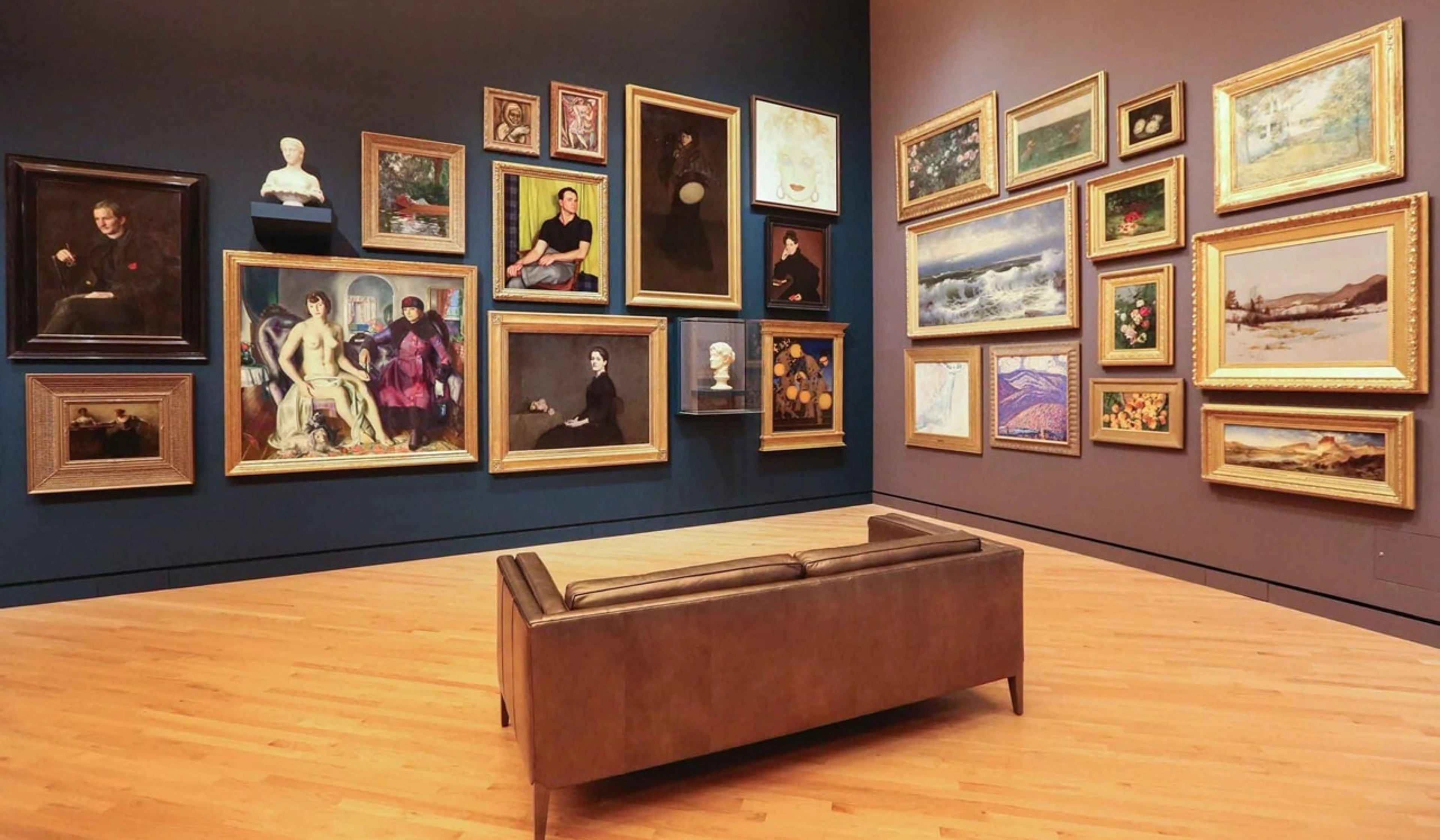
The Art of the Anchor: How to Create Focal Points with Abstract Art
An artist's guide to using abstract art to create powerful focal points in any space. Discover tips on choosing, framing, and placing art to transform your home's mood and energy.
The Art of the Anchor: How I Use Abstract Art to Create Unforgettable Focal Points in Any Space
You know that feeling, right? You walk into a room, and it's... fine. Comfortable, perhaps. But it lacks a certain oomph. A gravitational pull. A place for your eyes to land and say, "Ah, there it is." For me, that 'it' is almost always a piece of abstract art. It's not just about filling a blank wall; it's about crafting a feeling, a conversation, a quiet moment of contemplation. And honestly, it’s a journey I’ve been on for years, both as an artist pouring my heart onto the canvas and as someone who lives surrounded by these visual anchors. This guide isn't just a collection of interior design tips; it's a window into how I approach the powerful alchemy of art placement – a process I've come to understand as more about intuition and understanding than pure magic. It’s precisely this kind of powerful visual anchor, with its vibrant, textured presence, that a piece like Gerhard Richter's can provide, drawing you in and transforming the atmosphere into one with palpable 'oomph':

Why Even Bother with a Focal Point? (Because My Eyes Need a Home)
Think of a room without a focal point like a conversation with no clear topic. It can drift, get a little awkward, and ultimately, leave you feeling a bit unmoored. Our brains crave order and a sense of direction; we're hardwired to seek visual anchors. A focal point, whether it's a roaring fireplace, a grand window, or, yes, a captivating piece of art (or even an abstract sculpture that commands a corner), gives the eye a natural resting place, reducing cognitive load and enhancing visual hierarchy. It anchors the space, tells a story, and elevates the entire atmosphere from "just a room" to "a thoughtfully curated experience." Beyond simply bringing order, a well-chosen focal point can subtly influence your mood, making a space feel more serene or dynamic, and even affect your focus and productivity. In smaller rooms, it can cleverly trick the eye, making the space feel more expansive and thoughtfully laid out than it actually is. I remember walking into a friend's new apartment once, all pristine and minimalist. Beautiful furniture, tasteful colors. But after a few minutes, I felt restless. There was nowhere for my gaze to settle, nothing to draw me in. It was like a perfectly composed symphony without a melody. And that's where art, especially abstract art, swoops in like a superhero in a capeless (but very colorful) suit. And while any strong visual element can serve this purpose, I find abstract art offers a particularly potent way to achieve this, inviting a deeper, more personal connection.
So, why not give your eyes a home, a place to wander and settle, and let your room tell a compelling story?
The Abstract Edge: Why It's My Go-To for Room Transformation
Now, why abstract? Some might argue for a striking portrait or a serene landscape. And they're not wrong, those have their place. But while any strong element can anchor a room, I find abstract art offers a unique kind of magic when it comes to creating a focal point. It's less about depicting a scene and more about evoking an emotion, a mood, a burst of energy. Whether it’s the structured lines of geometric abstraction (think precise shapes and clear boundaries, like a Mondrian or even the grid-like compositions of Josef Albers, which provide a sense of order and grounding to a busy space), the fluid, often calligraphic movement of lyrical abstraction (emphasizing spontaneity and flow, perhaps reminiscent of Helen Frankenthaler's poured paintings, perfect for adding a soft, organic vibrancy), or the raw emotion of abstract expressionism (big, bold gestures, often conveying intense feeling, like the works explored in ultimate guide to abstract expressionism, ideal for injecting dynamic energy), each type can command attention in its own way.
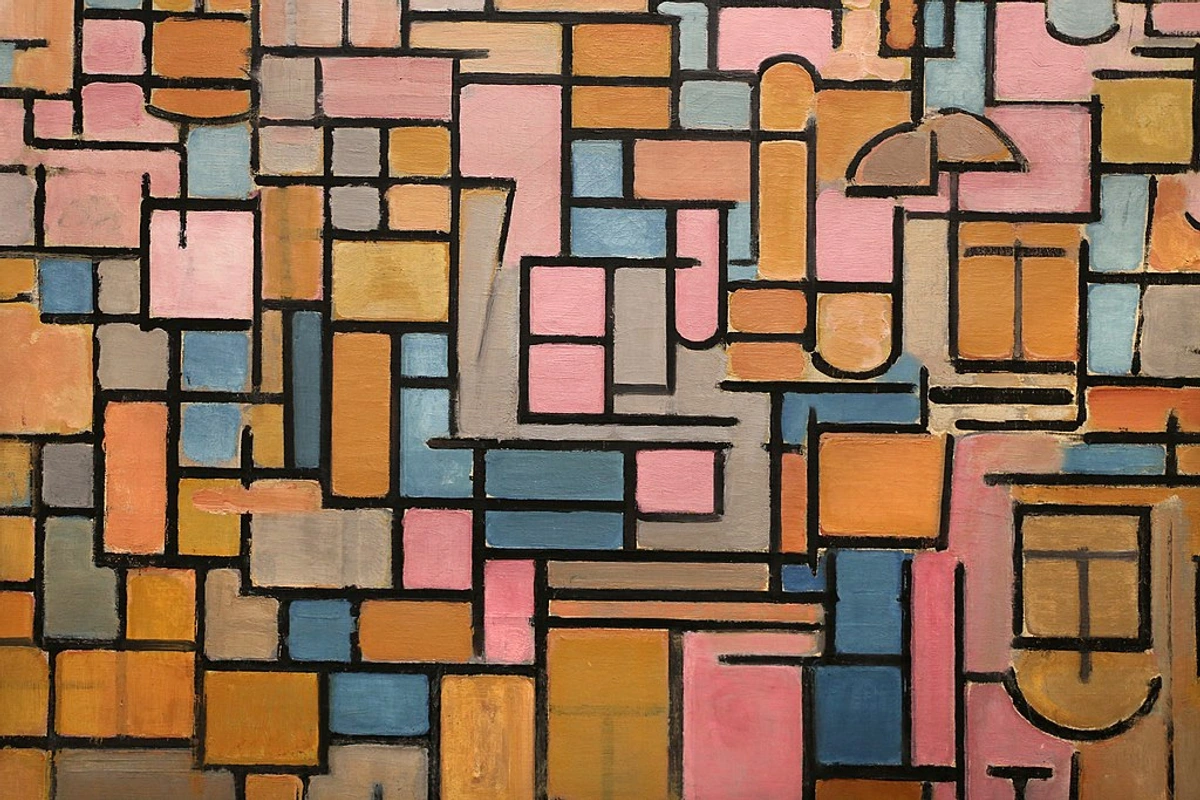
Consider also the immersive scale of Color Field painting, where large expanses of color, as seen in the works of Mark Rothko, envelop the viewer, creating an almost spiritual focal point that draws you into the very essence of color.
- It's a Conversation Starter (or a Quiet Companion): Abstract pieces invite interpretation. They don't tell you what to see; they ask you what you feel. This makes them inherently engaging. One day it's a tumultuous storm, the next it's a serene sky. It’s never boring.
- Color and Form without Limits: Unlike representational art, abstract works can play with color and form in ways that perfectly complement or dramatically contrast your existing decor. They offer a pure injection of aesthetic energy. For instance, a bold splash of cadmium red or a serene wash of cobalt blue in one of my pieces isn't just a color; it’s an emotional note, influencing the very pulse of the room. A vibrant red, like a passionate conversation, can ignite a dull space. A deep, expansive blue might quiet a restless mind, much like gazing at a vast, calm ocean. And a burst of yellow? Pure, unadulterated joy. But what about greens, those earthy tones that speak of growth and tranquility? Or deep purples, hinting at luxury and mystery? Even a well-placed orange can bring warmth and enthusiasm, and sophisticated neutrals can provide a calming, elegant backdrop for bolder elements. Understanding the interplay of colors can amplify this effect: using complementary colors (like blue and orange) can create powerful visual tension and vibrancy, while analogous colors (like blue, green, and purple) foster a sense of harmony and calm. If you've ever explored the emotional language of color in abstract art, you'll know exactly what I mean.

- The Power of Texture: Beyond color and form, the tactile quality of abstract art—its texture—can dramatically enhance its focal point power. A heavily impastoed surface, with its peaks and valleys, catches light and shadow in unique ways, inviting a closer look and adding a sculptural dimension. It adds another layer of sensory engagement, making the piece feel even more alive and present in the space. You can delve deeper into the role of texture in abstract art.
- The Element of Surprise: There’s an unexpected joy in seeing an abstract piece pull a whole room together. It's like finding the missing puzzle piece you didn't even know you were looking for.
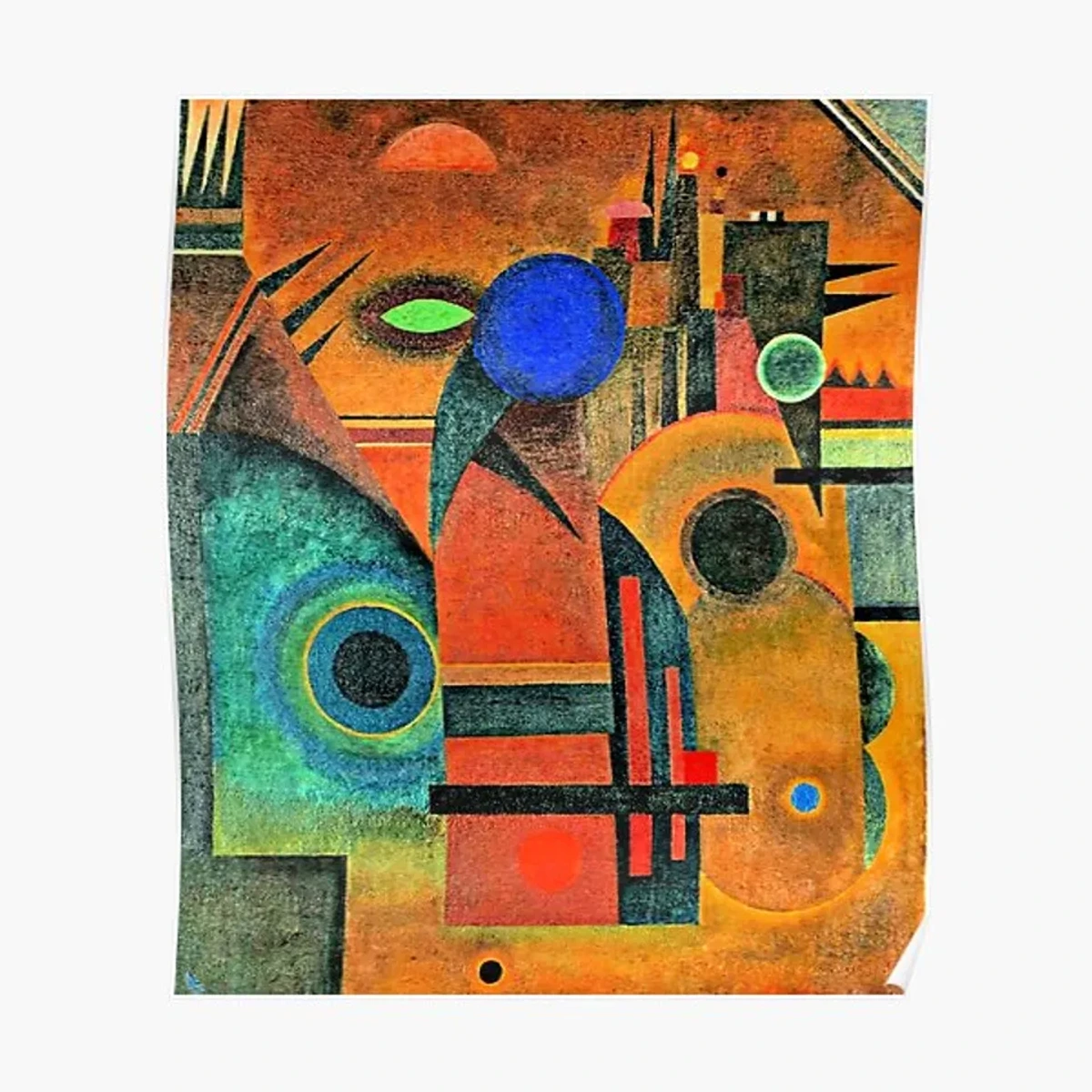
So, with the unique power of abstract art in mind, let's talk about how to actually bring it into your space, because even the most stunning piece needs a thoughtful home. What kind of visual story do you want your walls to tell?
Before You Hang: A Moment of Self-Reflection (and Measuring Tape)
Before you grab the hammer (or, if you’re like me, consult someone more competent with tools, because let's be honest, my art is on the canvas, not on the wall studs), take a deep breath. This isn't just about aesthetics; it's about how the art will live with you. So, before leaping in, let's consider a few key elements that will ensure your chosen piece truly shines and feels right in its new environment.
What's the Room's Story?
Every room has a purpose, a vibe. Is it a bustling living room where family gathers? A tranquil bedroom retreat? A vibrant office where creativity flows? The art you choose, and where you place it, should resonate with this underlying narrative and the room's functionality. A commanding piece in a dining room can spark conversation, while a calming abstract in a bedroom might encourage relaxation. For a vibrant home office, a dynamic, colorful abstract might fuel creativity, while a serene, minimalist piece could be perfect for a meditation space. For a deeper dive into curating art for different spaces, you might enjoy my thoughts on abstract art for every room.
Considering Your Furniture's Language
Beyond the room's purpose, think about your existing furniture. Is your decor sleek and modern, rich and traditional, or relaxed and bohemian? Abstract art can beautifully complement any style. For modern spaces, consider geometric or minimalist abstracts that echo clean lines. In traditional settings, a lyrical or expressive abstract can offer a surprising, invigorating contrast, or a softer, muted piece can blend seamlessly. For bohemian vibes, textured, organic abstracts with earthy tones often feel right at home. It’s about creating a conversation between the art and its surroundings, not just a match. In fact, a bold abstract piece can even serve as a unifying thread, harmonizing otherwise disparate design elements or periods within a room – for instance, a piece featuring both clean lines and organic brushstrokes could tie together a mid-century sofa with a rustic wooden table.
Size Matters (But Don't Overthink It)
This is where the measuring tape comes in. A common mistake is hanging art that's too small for the wall, making it look lost and insignificant. For a true focal point, go bold. A single large piece, or a well-curated gallery wall, can truly command attention. As a general rule, aim for art to take up roughly two-thirds to three-quarters of the width of the available wall space above furniture. If you’re unsure, try mocking up the size on the wall with painter’s tape or paper to visualize its presence. This guideline is for creating a dominant focal point; smaller, intensely detailed pieces can also serve as focal points in more intimate settings, offering a different kind of magic – a quiet pull rather than a grand statement. I once hung a truly massive abstract piece, only to realize (after much effort and a few close calls with the plaster) that while it commanded attention, it completely swallowed the delicate antique cabinet beneath it. It was a powerful lesson in scale not just to the wall, but to the objects around it. And remember, the scale isn't just about the wall; it's about how it feels to you when you stand in the room. A massive piece in a small room can feel overwhelming or surprisingly intimate, depending on your intent and your personal connection to the piece. Oh, and don't forget the ceiling height! A very tall piece in a room with a low ceiling can feel cramped, whereas a wide, expansive piece might stretch a perception of width. It's always a dance, isn't it?
Light, Camera, Action!
Natural light is a blessing, but sometimes it can cause glare. Consider how light falls on the wall throughout the day. Artificial lighting can also be your friend. Spotlights or picture lights can dramatically enhance your chosen focal point, drawing the eye directly to it. I've got more thoughts on this in the art of display.
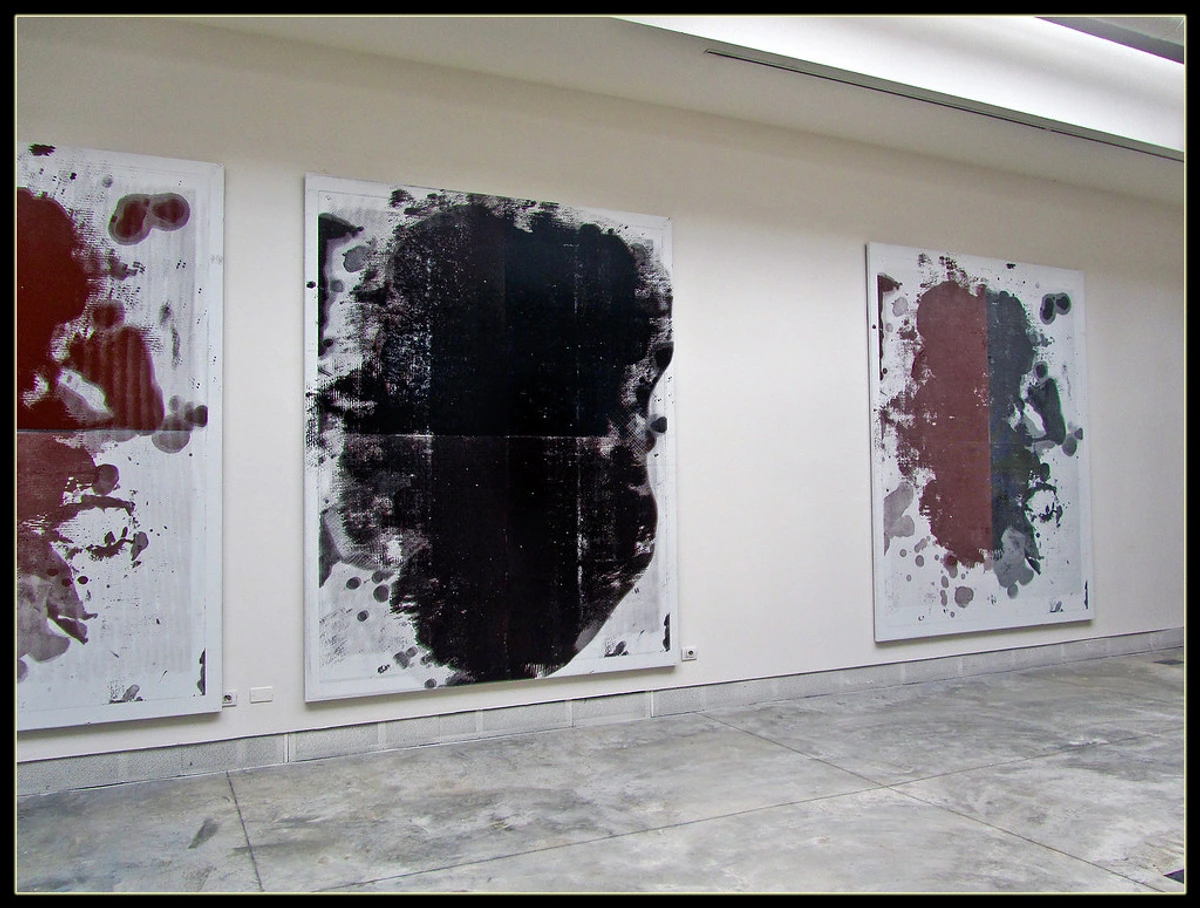
Beyond the Canvas: Framing Your Abstract Masterpiece
Sometimes, the secret to a powerful focal point lies not just in the art itself, but in its presentation. The frame, often an afterthought, can be a crucial element in how your abstract piece commands attention and integrates with its surroundings. It's like choosing the perfect outfit for a character – it can totally change their presence.
- Material Matters: Consider the material of your frame. Sleek metal frames (aluminum, steel) can enhance the modern feel of a geometric abstract, echoing clean lines and a contemporary aesthetic. Warm wooden frames, on the other hand, might soften the edges of a bold expressionist piece, or bring an organic touch to a lyrical abstract, grounding it within a more traditional or bohemian decor.
- Color Play: The frame's color is another silent collaborator. A black or white frame often creates a strong visual boundary, making the colors within the abstract pop. But don't shy away from subtle color-matching; a frame in a muted tone picked from within the artwork can create a seamless, sophisticated look. Or, for a truly daring statement, a contrasting color could highlight a particular hue in the art, pulling it into the room's palette.
- The Magic of Matting: While not always necessary for abstract art, a mat board creates a visual breathing space between the artwork and the frame, drawing the eye inward. For smaller or more detailed abstract pieces, a wide mat can give them more presence on a large wall, effectively making them appear larger and more significant as a focal point. Just be sure the mat color complements the art, rather than competing with it. For more specific guidance, you might find tips in how to frame oversized artwork.

Placement Perfection (Or My Best Guess, Most Days)
Okay, you've chosen your magnificent abstract piece. Now, where does it go? The moment of truth. Are you ready to unleash its power? This is where the magic happens – or, sometimes, where I stand for an hour, holding the painting up, asking an imaginary friend for advice. Oh, the glamour of being an artist!
- The Goldilocks Rule (Eye Level): Generally, the center of your artwork (or the center of a grouping) should be at eye level. This usually means about 57-60 inches (145-152 cm) from the floor to the center. Unless you're hanging it above furniture, then it's a slightly different game.
- Above the Sofa or Bed: When placing art over furniture, ensure there's enough space between the bottom of the frame and the top of the furniture – typically 6-12 inches (15-30 cm). The art should also be narrower than the furniture it's above. No one wants an artwork that looks like it's about to slide off the edge of the sofa. Trust me, I've seen it.
- Commanding an Entrance: If you have a grand entryway or a long hallway, a large abstract piece can be a stunning focal point, immediately setting the tone for your home.
- Opposite a Main View: Position your focal point opposite the main entrance to the room or a primary seating area. This ensures it's the first thing you (or your guests) see when entering or relaxing.
- Complementing Existing Focal Points: What if your room already has a strong architectural feature like a fireplace, a large window with a view, or a grand built-in bookshelf? Abstract art can beautifully complement these, or even create a dynamic dialogue. For example, a piece with strong horizontal lines and muted tones could echo the long mantelpiece of a traditional fireplace, while a vibrant, chaotic abstract might offer a captivating counterpoint to the sharp, clean lines of a modern built-in. This allows the art to engage with the very structure of your home, not just its contents, inviting the eye to explore the space further. I often think of it as orchestrating a visual symphony – each element has its place, but the abstract piece is often the solo.
- Consider the Room's Scale and Other Elements: Beyond just the wall, it's crucial to consider how the artwork's scale relates to everything else in the room. A massive, bold abstract might overwhelm a space already filled with intricate patterns or numerous small decorative items. Sometimes, a quieter piece allows other design elements to breathe, creating a more harmonious overall feel.
- Don't Be Afraid to Break the Rules (A Little): Sometimes, a piece placed unexpectedly low, or off-center, can create an intriguing dynamic. For instance, I once hung a vibrant, chaotic abstract piece intentionally low over a simple, quiet console table, almost like it was whispering a secret to the furniture. It defied the 'eye-level' rule but created a surprisingly powerful, intimate moment. But start with the rules, then break them intentionally. Like a rebel with a cause, but for art. Remember, these are guidelines to get you started, not rigid commandments etched in stone. Your home, your rules, right?
And once it's up, that's when the real transformation truly begins... What unexpected joy will your abstract art bring to your everyday?
The Transformative Power of Abstract Art: Beyond Aesthetics
The real magic of positioning abstract art isn't just about aesthetics; it's about the emotional and atmospheric shift it brings. A vibrant abstract can inject energy into a quiet corner, a calming one can soothe a busy mind. It's truly a dance between intuition and intent, much like my own process in creating abstract layers. I remember creating a large piece, filled with swirling blues and greens, with just a hint of energetic yellow breaking through – I thought of it as "Optimism in Motion." When I finally hung it in my studio here in Den Bosch, the room instantly felt different. It wasn't just a visual change; it was an energetic shift. The space, which had often felt like a quiet, contemplative work zone, now pulsed with a quiet, hopeful dynamism, subtly nudging me towards new possibilities. It was almost startling how a single object could so profoundly alter the feeling of an entire space. This isn't just a design principle; it's a living, breathing transformation I experience daily in my creative flow. It’s about creating a silent dialogue between the art and the viewer, enriching the very air you breathe within your home, inviting you into a new way of seeing and feeling. My personal connection to each piece, the story it tells me during its creation, often finds an echo in the viewer's own experience, even if they interpret it differently. That shared, unspoken narrative is part of the magic.
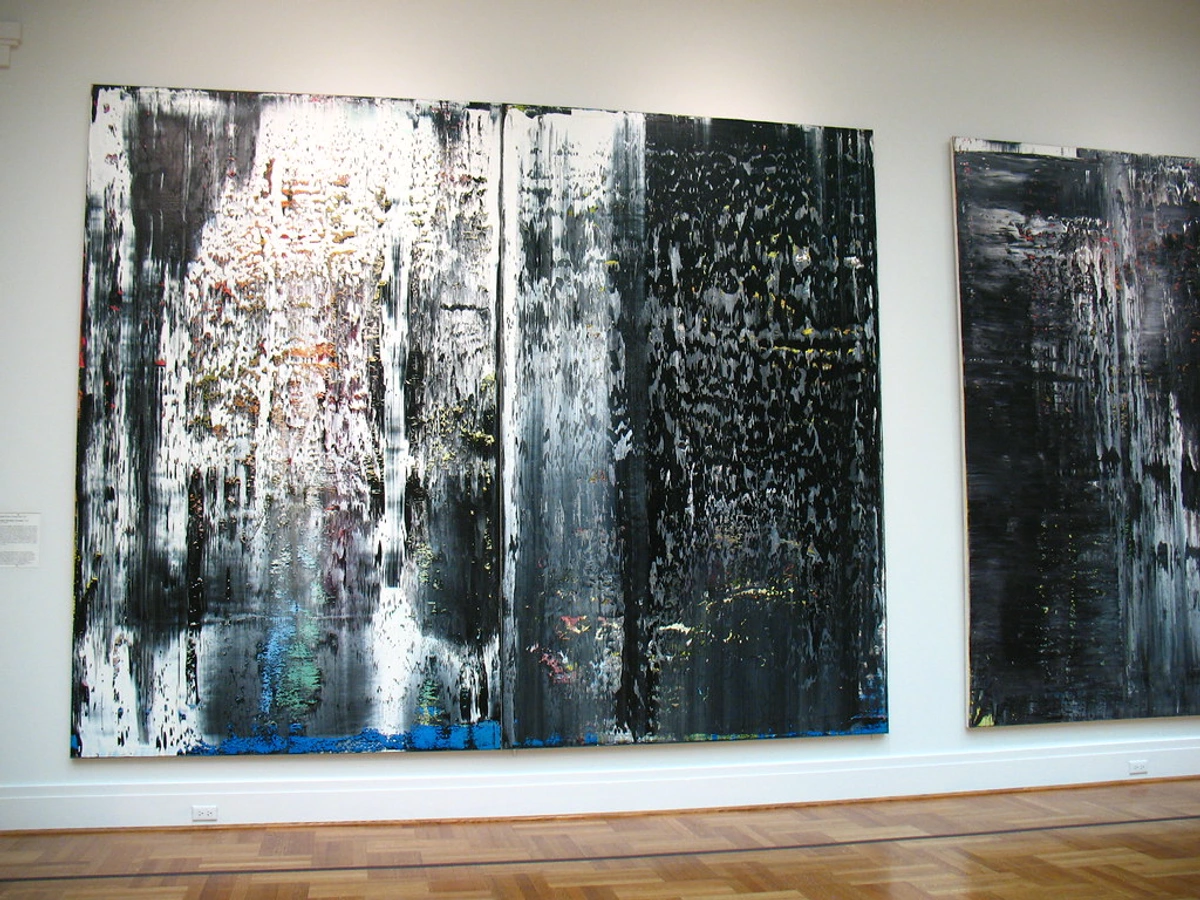
The Unseen Connection: The Artist's Story and Yours
When we talk about abstract art, there's often a question: "But what does it mean?" While abstract art thrives on personal interpretation, understanding a little about the artist's intent or the story behind the piece can deepen your connection and appreciation. An artist's statement, for example, isn't just a marketing blurb; it's a glimpse into the creative mind, the inspirations, and the emotional landscape that birthed the work. Knowing that a chaotic burst of color was born from a period of intense personal change, or that a serene composition reflects a search for inner peace, adds an invisible layer to the visual experience. Similarly, understanding the medium or technique used – whether it's the rich, layered impasto of oil, the fluid transparency of watercolor, or the unexpected textures of mixed media and collage – can reveal the artist's process and add another dimension to your connection with the piece. It's like knowing a secret about a friend – it changes your perspective. For many, the act of collecting abstract art becomes a personal journey of discovery, a visual diary of evolving tastes and emotional connections, mirroring the artist's own creative exploration. You can learn more about deconstructing artist statement or generally decoding abstract art.
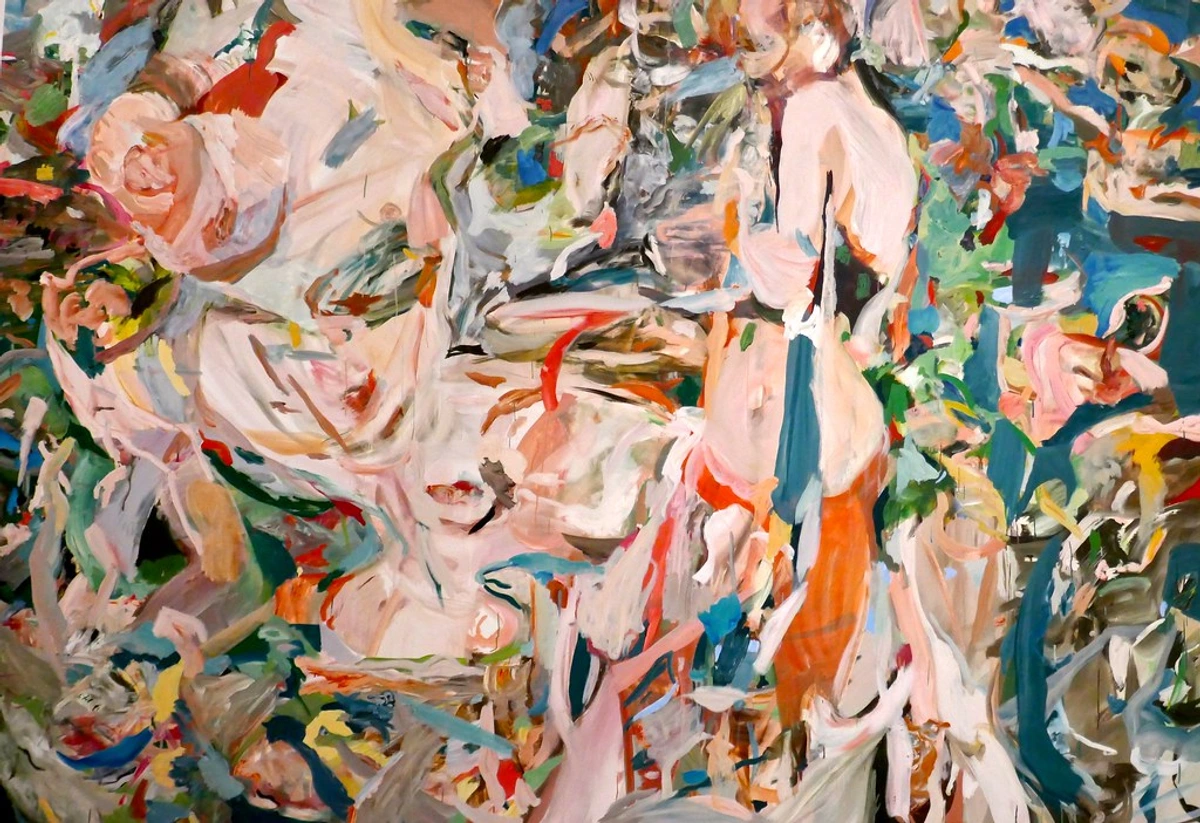
If you're ready to infuse your home with this kind of transformative energy, I invite you to explore my latest creations. Perhaps your next focal point is waiting there, ready to begin its own quiet revolution in your space.
Frequently Asked Questions About Positioning Abstract Art
Q: How high should I hang abstract art?
A: As a general rule, aim for the center of the artwork to be at eye level for an average person, which is typically 57-60 inches (145-152 cm) from the floor. When hanging above furniture, allow 6-12 inches (15-30 cm) clearance from the top of the furniture.
Q: Can I use abstract art in a small room?
A: Absolutely! In small spaces, a single large abstract piece can actually make the room feel bigger by creating depth and a strong focal point. Smaller pieces work well in cozy nooks. You might find more tips in abstract art for small spaces.
Q: How do I choose the right size abstract art for a focal point?
A: For a primary focal point, consider a piece that takes up about two-thirds to three-quarters of the visible wall space. For example, if hanging above a sofa, the art should ideally be narrower than the sofa itself, leaving some breathing room on either side.
Q: Should abstract art match my room's color scheme?
A: Not necessarily! Abstract art can perfectly complement your existing colors, or it can introduce a bold, contrasting pop of color to add visual interest and energy. It's about finding what feels right and creates the desired mood. Check out choosing art based on room color for more on this.
Q: What if my abstract art has a lot of white space or negative space? How does that affect its role as a focal point?
A: White space or negative space in abstract art can be incredibly powerful in creating a focal point. Instead of visually "filling" the wall, it creates a sense of openness and calm, drawing the eye directly to the intentional forms and colors within that space. It allows the art to breathe and can make a strong, understated statement. It emphasizes the carefully placed elements, giving them even more impact by providing visual relief around them, almost like a frame around the 'subject' of the abstraction.
Q: What if my abstract art has a very busy or chaotic composition? Can it still be a focal point?
A: Absolutely, yes! A busy or chaotic abstract piece can be an incredibly dynamic and engaging focal point, demanding attention and injecting intense energy into a room. The key is balance. If the art is very complex, consider keeping the surrounding decor simpler to allow the artwork to truly shine without overwhelming the space. It becomes the vibrant heart of the room, around which everything else can subtly revolve.
Q: How do I choose abstract art when my room already has a strong, non-art focal point (like a fireplace or a stunning view)?
A: In such cases, your abstract art can either complement or create a fascinating dialogue with the existing focal point. Choose art that echoes the existing feature's lines or colors, or select a piece that offers a deliberate contrast, drawing the eye into a secondary point of interest. The goal is to enhance the room's visual richness without competing, creating layers of interest.
Q: How do I clean and care for abstract art, especially if it has texture or mixed media?
A: Always handle your artwork with clean hands. For paintings, a soft, dry cloth can gently remove dust. Avoid harsh chemicals or excessive moisture, especially on textured or mixed media pieces, as they can damage the surface. For detailed care instructions specific to a piece, it's always best to consult the artist or a professional conservator.
Q: What if I don't know where to start?
A: Start by experimenting! Prop art against a wall, move it around, live with it for a day or two. Don't be afraid to try different spots. It's your space, and the best placement is ultimately the one that brings you the most joy and aesthetic satisfaction. And if all else fails, a fresh cup of coffee and a good long stare usually helps me.
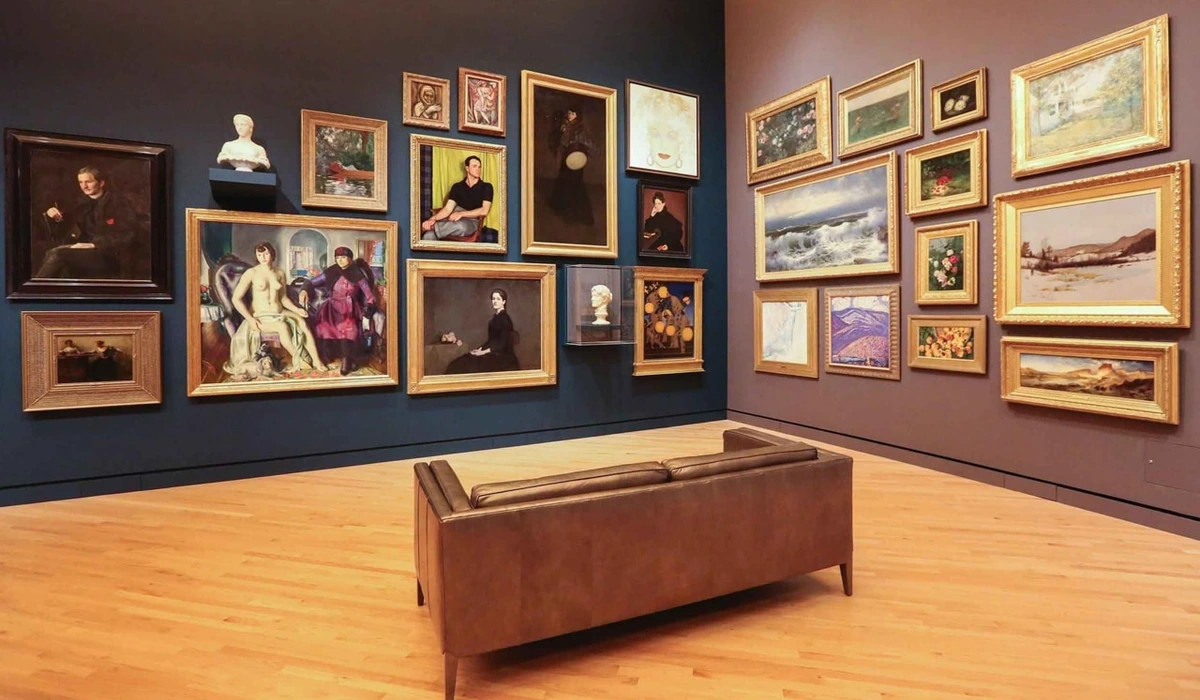
Final Brushstrokes
Creating a focal point with abstract art isn't just about interior design rules; it's about expressing yourself, bringing life into your home, and finding new ways to connect with beauty. It’s about creating a space that feels uniquely yours. Don't be afraid to trust your gut, embrace a little trial and error, and let the art speak for itself. After all, your home is your canvas, and you're the artist. So go on, make your mark. And if you ever find yourself near my studio in Den Bosch, do drop by! I'm always happy to chat about art and life's little mysteries, because in the end, that's what art truly is: a beautiful mystery waiting to transform your everyday.




